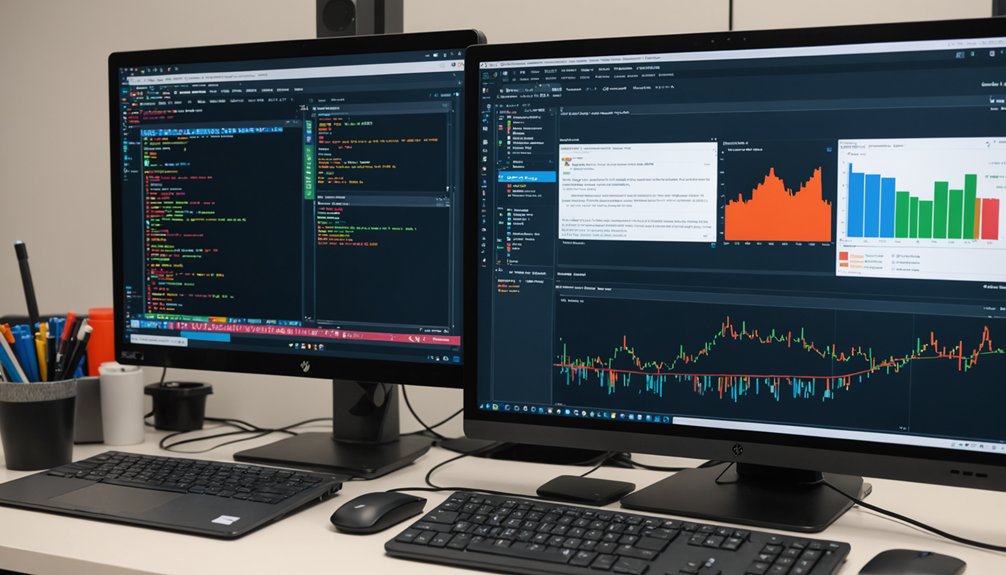Mastodon is Twitter's weird, non-corporate cousin. It's a decentralized microblogging platform where users post "toots" instead of tweets across independent servers called instances. No algorithms, no ads, no data mining. Users pick servers based on interests, with each having its own rules. Privacy settings actually work here. The 500-character limit gives more breathing room than Twitter's constraints. The open-source structure means corporations aren't pulling the strings behind your social media curtain.

In a digital landscape dominated by tech giants, Mastodon stands apart. It's not your typical social media platform. No central authority. No algorithms deciding what you see. No advertisements cluttering your feed. Just people connecting with people across a network of independent servers.
Mastodon operates as a microblogging platform, similar to Twitter but with a twist. Users post "toots" instead of tweets. Yeah, that's what they're called. Deal with it. The platform is built on open-source software, meaning anyone can contribute to its development or even create their own version. Like modern AI frameworks that use tensor operations for efficient data processing, Mastodon's architecture enables scalable, distributed communication. Similar to how prompt engineers optimize AI systems for accuracy, Mastodon's open development allows continuous refinement of its features.
The magic of Mastodon lies in its decentralized structure. Think of it like email. You choose a provider, but you can still communicate with people using different services. On Mastodon, you join a server (also called an instance) that aligns with your interests or values. Each server has its own rules and moderation policies. Don't like how one server is run? Move to another. Or start your own.
Decentralized freedom lets you find your digital home, with the power to leave when the neighborhood goes downhill.
This server autonomy creates communities with shared interests and standards. Want a space free from certain topics or behaviors? There's probably a server for that. The platform is part of the larger Fediverse, connecting with other services through the ActivityPub protocol. This standardized communication system enables seamless interaction between different platforms in the Fediverse.
Privacy matters here. Users control who sees their content through granular privacy settings. No data mining. No targeted ads. Just communication.
Of course, it's not perfect. The lack of centralized oversight means moderation varies wildly between servers. Age verification is practically non-existent. Young users might encounter inappropriate content or cyberbullying with fewer protections than on mainstream platforms. The platform typically limits posts to 500 characters though some servers allow for longer messages.
Mastodon offers something increasingly rare online: user control. Your data stays with you. Your server choice determines your experience. Your community sets the standards. In an era where most platforms track your every move and monetize your attention, Mastodon's approach feels almost revolutionary. Almost.
Frequently Asked Questions
How Does Mastodon Compare to Twitter?
Mastodon and Twitter differ fundamentally.
One's decentralized, the other's not. Mastodon runs on independent servers with community moderation and no ads.
Twitter? Single company, centralized control, ad-driven.
Both have chronological feeds, but Mastodon allows 500-character posts versus Twitter's newly expanded 4000.
Mastodon's growing, especially after Twitter's ownership changes, but remains smaller.
More user control, less algorithm-driven content.
Harder to navigate, though. Freedom has its price.
Can I Migrate My Followers From Other Platforms?
Nope. That's not happening.
Mastodon only allows follower migration between Mastodon servers—not from Twitter, Instagram, or other platforms. It's a technical limitation, not just policy.
Users switching from Twitter to Mastodon start from scratch, building their follower base anew. The decentralized nature of Mastodon simply doesn't interface with centralized platforms for user data transfers.
Tough break for social media influencers looking for an easy changeover.
What Happens if My Chosen Instance Shuts Down?
When a Mastodon instance shuts down, users lose everything—posts, followers, the works.
No central backup exists, period. Administrators must provide three months' notice before pulling the plug. Users then scramble to export their data and find a new digital home.
Recovery? Totally depends on whether admins shared backups. The self-destruct command wipes all server references from the Fediverse.
Brutal, but that's decentralization for you.
How Private Are My Posts on Mastodon?
Privacy on Mastodon depends entirely on settings chosen.
Public posts? Anyone can see them.
Unlisted? Only followers, not in timelines.
Private posts restrict visibility to followers only, while Direct messages are for mentioned users exclusively.
But here's the kicker: nothing's truly private.
No end-to-end encryption exists for DMs. Your server admin can see everything.
And if a server's privacy policy sucks? Tough luck.
Choose wisely.
Can I Run My Own Mastodon Server?
Yes, anyone can run their own Mastodon server.
It requires at least 2 CPU cores and 2GB RAM, preferably on Ubuntu or Debian. You'll need a domain name, email service, and storage solution. Costs vary based on hosting provider.
VPS options like IONOS can support from few to thousands of users. Docker makes installation easier. The server must stay online 24/7.
Not for the technically faint-hearted.




